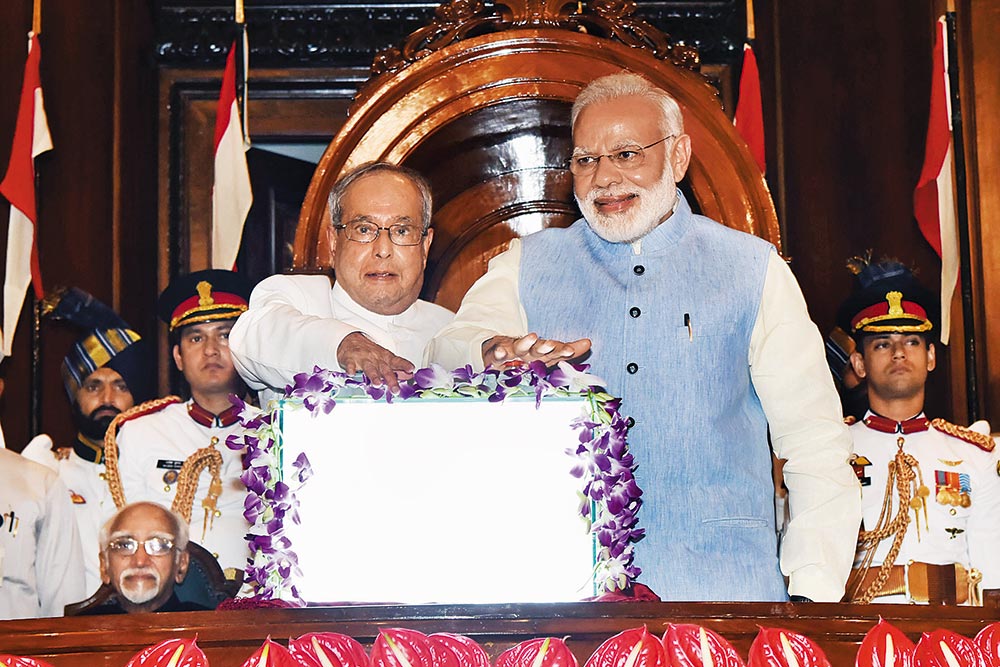India is on the course to become the third-largest economy in the world well before the end of this decade. From low single-digit contribution, we are now at high single-digit contribution to incremental global GDP [gross domestic product] growth.
The time has come to take strides in per capita GDP as we remain among the lowest quartile of per capita GDP countries. Despite the strides in economic growth since the ’90s, we have little above two-thirds of our fellow Indians living at the sub-Saharan level. By providing free food to 80 crore Indians, we have overcome hunger and starvation challenges.
As they say, teach a person to fish rather than give them fish. The following steps can be considered to accelerate our growth journey to create sustainable, more inclusive, environment-friendly, double-digit GDP growth.
Jobs and Reforms
India has to create more well-paying jobs. IT [information technology] services, global capability centres and great Indian outplacement have shown us the way. We need to replicate this model in other industries. A one-line simple explanation for our biggest challenge is that approximately 10–15 crore people have disguised employment in the agriculture sector. We must make them gainfully employed.
Our manufacturing is burdened with higher power cost and logistics costs. Industrial power bears the subsidy of agricultural power. Commercial railway freight bears the burden of passenger fare subsidy. Agriculture power and railway passenger fare subsidies must be absorbed into the budget rather than loaded onto the economy.
Previously, we did not have the fiscal space to absorb such subsidies. Fortunately, re-rating of stocks of public sector undertakings [PSUs] has provided an option. The PSU market cap has increased significantly in the past three years. It offers an excellent opportunity to increase divestment, including strategic divestment to raise resources to absorb full or partial power and logistics subsidies to make our manufacturing competitive with the peer group and take full advantage of the China-plus-one opportunity.
A gold-monetisation scheme, which can bring gold locked in the parallel economy to the mainline economy, can raise additional resources. Seek free labour movement with long-term work permits in our free trade agreements [FTAs]. We should provide preferential access to our markets on trade as well as finance in lieu of preferential access to our labour on long-term work permits. We are the highest recipient of remittances in the world. We should look to increase the same through such access.
Provide skills through institutional mechanisms across India. A plumbing institute in Kendrapara, Odisha, provides plumbers not only to India but also to the world. A Japanese language and culture orientation mechanism in the Northeast is creating blue-collar workers for ageing Japan. Such institutional mechanisms need to be created to provide skilled workers to the ageing world.
Unlocking Potential
Improve or launch production-linked incentive (PLI) schemes to expand manufacturing jobs. Our garment exports lag our peers. It makes commercial sense to export garments rather than yarn or fabric and keep the value added. It can also create massive jobs. Processed agro products, automobiles, auto components, engineering, lab-grown diamonds, jewellery etc., can be focused upon to create well-paying jobs.
Services sectors like tourism, education and healthcare must be supported through integrated development. The Indian diaspora should be nudged to become brand ambassadors for tourism, education and the healthcare sector. We provide quality healthcare at a low cost.
Growth requires investment. Our savings are frozen in real estate, gold and currencies. We must encourage the unlocking of frozen savings through innovative ideas to ensure adequate capital is available for our entrepreneurs. Investment requires the rule of law. Many investors prefer arbitration outside India. Our judicial infrastructure is burdened with unresolved cases. Investment should be made to improve judicial infrastructure so that we can resolve cases faster.
Investment requires ease of doing business. Land acquisition remains a challenge. Labour laws, despite some reforms, pose a significant challenge.
Roadmap for the Future
We must create a special economic zone where one-window clearance is available for setting up a project with labour laws comparable to our peers. A GIFT City-equivalent concept for the non-financial services industry can become a role model.
In today’s world of disruptive technologies, we must invest for the future. The vote on account proposed a fund for investment in future technologies. The same should be operationalised quickly through public-private partnerships. For example, in artificial intelligence, we should aim for our foundation. Pharma should have vertical integration through large fermentation plants and primary research for new drugs.
India, China and the US have become the engines of global growth. We remain one of the lowest per capita carbon emitters in the world. We will blow out the world if we follow the Western or Chinese standard of energy-guzzling growth. While we should follow a green growth model through renewable energy, we must seek compensation through technology or capital grants to create a level playing field.
A large part of India depends upon agriculture. Without the upliftment of agriculture, creating inclusive and sustainable growth will be difficult. What we did on milk to become the largest milk producer in the world through cooperative movements needs to be replicated in other commodities.
Substitution of imported commodities like palm oil, pulses, dry fruits and fruits can create local opportunities. Focusing on exports of agro products, horticulture etc., can support farmers. Land acquisition for mining is a challenge. Despite having large coal reserves, we import coal worth billions of dollars annually. We must create a responsible mining policy, balancing local and industrial interests.
Money Matters
Indians are good savers but not necessarily good investors. A yearly investment of Rs 1.5 lakh over 25 years in a public provident fund account will be worth about Rs 1.03 crore (tax free). The same investment in an average ELSS [Equity Linked Savings Scheme] fund will be worth Rs 4.42 crore (taxable). That is a gap of Rs 3.39 crore (before tax).
Well begun is half done. Hope and pray that the above suggestions help India in its amrit kaal to become Viksit Bharat.

Nilesh Shah is Managing Director, Kotak Mahindra AMC











 Just one email a week
Just one email a week